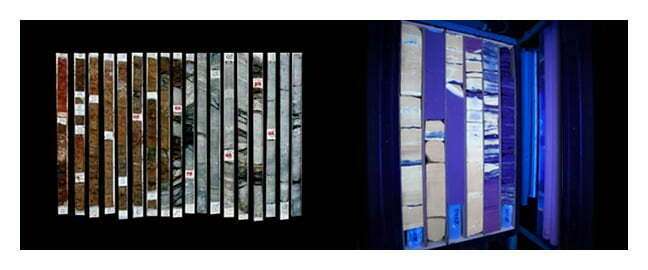Oil Staining and Fluorescence
The presence and color of any oil stain and oil fluorescence are both routinely recorded (Figure 1).

Core samples that contain oil will glow when placed under an ultraviolet light. It is often possible to prove the presence of hydrocarbons by observing this fluorescence, and to predict the expected hydrocarbon production phase from a zone. For example, gas condensate typically appears as a uniformly bright blue/white, whereas oil productive zones exhibit a uniform bright gold fluorescence. The absence of fluorescence indicates either that oil is absent, or, if oil is present, that the aromatic compounds have been leached from the oil into the core.
Some minerals exhibit fluorescence under ultraviolet light, but mineral fluorescence is of no commercial significance. When it is not possible to differentiate between the oil fluorescence and mineral fluorescence, a small portion of the core is chipped off and placed in a clean, dry dish. A solvent such as chlorothene, is poured onto the chip. This dissolves the oil that is present, and the fluorescence may be observed in the solvent moving away from the core sample. This is referred to as “oil cut fluorescence,” and the nature and speed of the cut is noted.
 Petro Shine The Place for Oil and Gas Professionals.
Petro Shine The Place for Oil and Gas Professionals.



